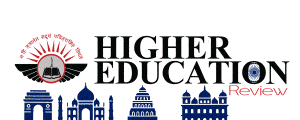How Resume Templates Can Elevate Your Job Application
 In an increasingly competitive job market, making a strong first impression is more critical than ever. Often, this impression is formed not by your charm or communication skills, but by a well- structured piece of paper - your resume.
In an increasingly competitive job market, making a strong first impression is more critical than ever. Often, this impression is formed not by your charm or communication skills, but by a well- structured piece of paper - your resume.
As a tangible manifestation of your professional self, a resume not only provides prospective employers with insight into your skills and experience, but it also reflects your organizational capabilities, attention to detail, and even, your personal brand. But, let's face it, crafting a resume from scratch can be a daunting task, especially if you're unsure about the formatting or what to include.
In today's digital age, there are countless professional resume templates available, designed to simplify the process and ensure you present your qualifications in a professional and organized manner.
Understanding Resume Templates
Before diving into how resume templates can enhance your job application, it's essential to understand what they are and what types are available to you. In its simplest form, a resume template is a preformatted document designed to guide you in crafting your resume.
Types of resume templates:
- Chronological Resume Templates: This type is ideal for individuals with a rich employment history in their field. The main focus is on the chronological order of your work experience, with your most recent job listed first.
- Functional Resume Templates: A functional template is better suited for those looking to emphasize their skills over their work history. This can be particularly useful for fresh graduates, career changers, or individuals with gaps in their employment history.
- Combination Resume Templates: As the name suggests, a combination template blends elements of the chronological and functional templates. It emphasizes both your skills and your chronological work history, making it a flexible choice for many job seekers.
Numerous online resources provide a variety of resume templates, catering to different industries, experience levels, and aesthetic preferences. Many word processing programs, such as Microsoft Word or Google Docs offer basic templates.
Dedicated career websites, like LinkedIn, also offer job-specific templates. For a more customized approach, there are also paid resources like Canva and VisualCV. It's essential to choose a source that provides reliable, professional-looking templates tailored to your career goals.
The Advantages of Using Resume Templates
Resume templates offer a streamlined approach to job applications, significantly enhancing the final product. Their pre-designed layouts reduce the time spent on formatting, allowing job applicants to focus more on the content.
They ensure a professional aesthetic by adhering to industry standards, something that could be challenging to achieve without design skills. Resume templates also guarantee the inclusion of all essential information, from contact details to skills and experience, providing a well- rounded view of the candidate.
They promote consistent formatting, preventing errors that might hinder readability, and their clean, clear design helps applicants stand out in a crowded job market. In essence, resume templates are a potent tool, simplifying the resume creation process and promoting a polished, professional application.
However, it's vital to choose the right template to align with individual career goals and experiences.
Tips for Choosing the Right Resume Template
Selecting the right resume template is vital for streamlining the resume creation process. It involves understanding the job requirements and selecting a design that fits.
For instance, creative roles may benefit from imaginative templates, while traditional roles may require a simpler, more professional design. The resume should mirror your personal brand and career history, with templates chosen accordingly.
The template's design and layout should be professional, easily readable, and not overly decorated. It's also crucial to consider the compatibility with Applicant Tracking Systems (ATS) used by employers, favoring templates with clear headings and simpler designs.
Customization is another critical feature, enabling users to modify sections, colors, or fonts to suit their needs. The right resume template, combined with compelling content, lays the groundwork for a successful job application.
How to Customize Resume Templates
Customizing a resume template is critical to creating an effective and personalized resume. Key components include up-to-date contact details at the top, a succinct objective or summary tailored to the job you're applying for, and comprehensive listings of your work experience and education.
Any relevant skills and additional sections, like volunteer work or certifications, should also be included. Proofreading for any errors is essential with a second pair of eyes often useful for catching missed mistakes.
Customization provides an opportunity to showcase unique qualifications and experiences, creating a compelling, professional resume that stands out from other candidates. However, it's important to be aware of potential drawbacks of using resume templates and how to mitigate them.
Conclusion
In the rapidly evolving job market, standing out from the crowd is more important than ever. So whether you're a recent graduate, an experienced professional, or someone seeking to change careers, leveraging the power of resume templates can be the game-changer you need. To truly capitalize on this tool, ensure you imbue your resume with your unique experiences, skills, and personality. A resume template is just a foundation - it's your distinctive story that will truly set you apart. So go ahead, get started on your journey to landing your dream job with a well-crafted, professionally presented resume. Good luck!

